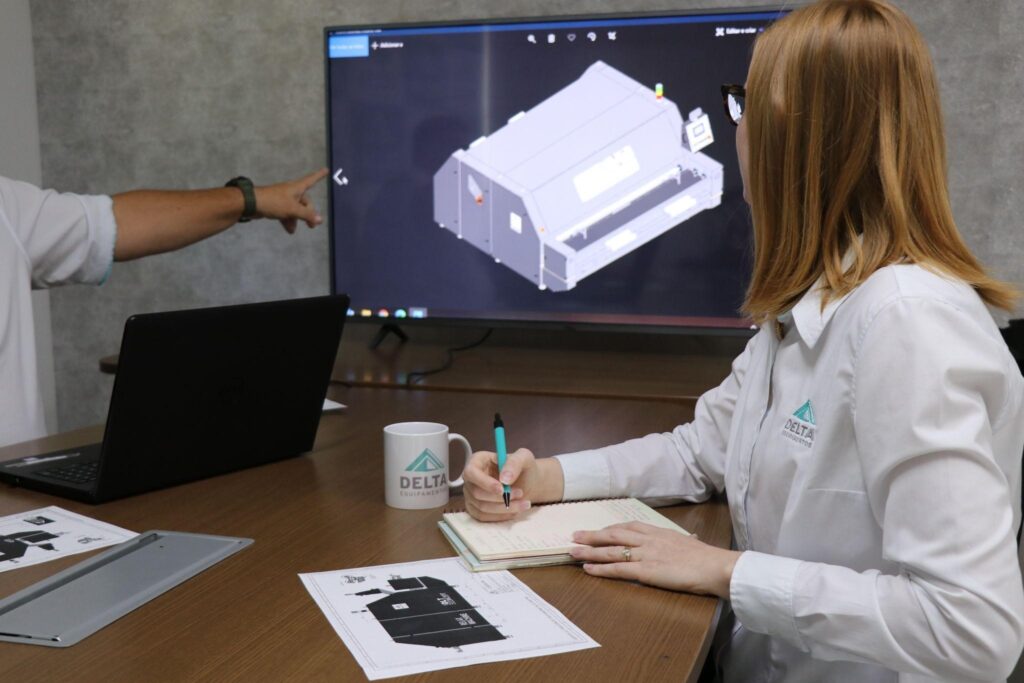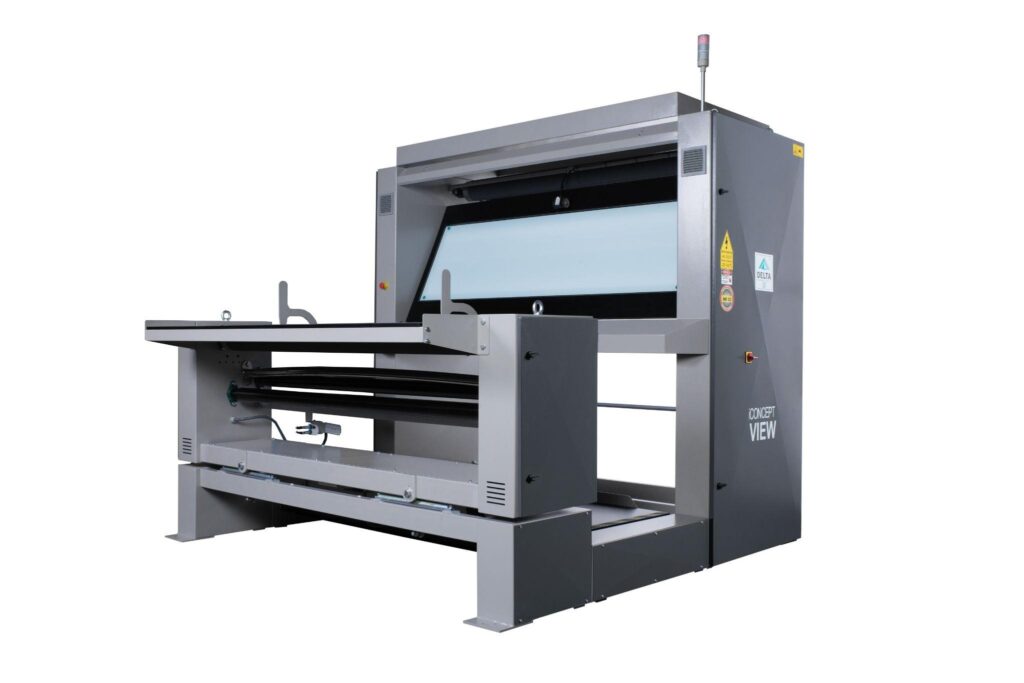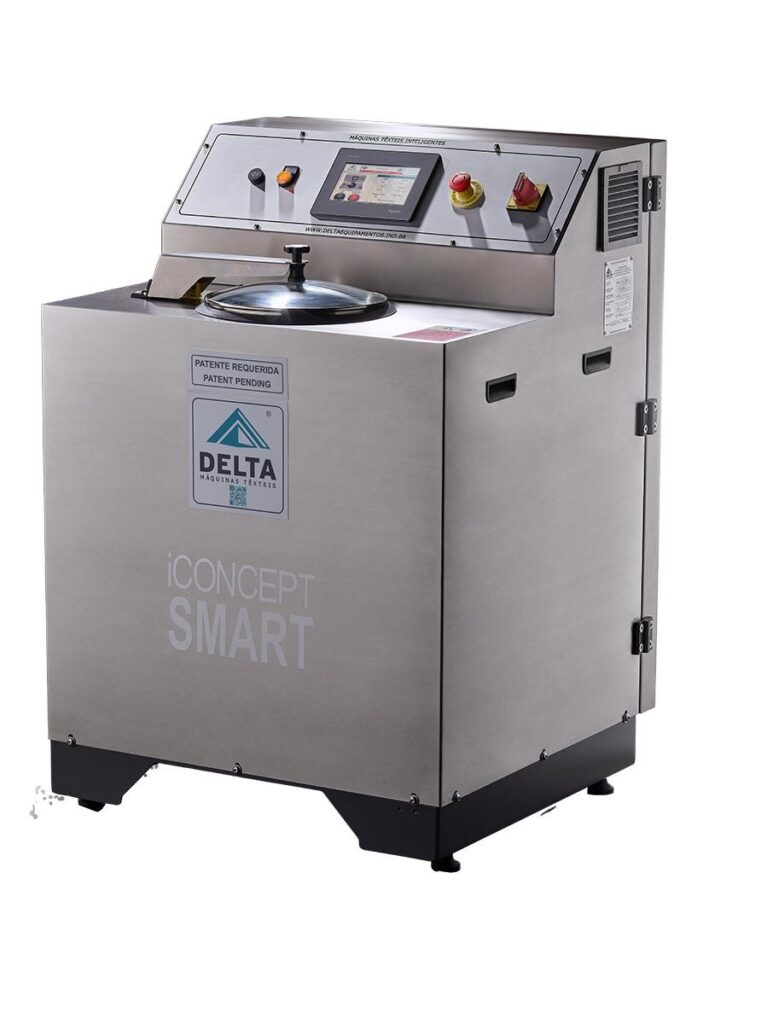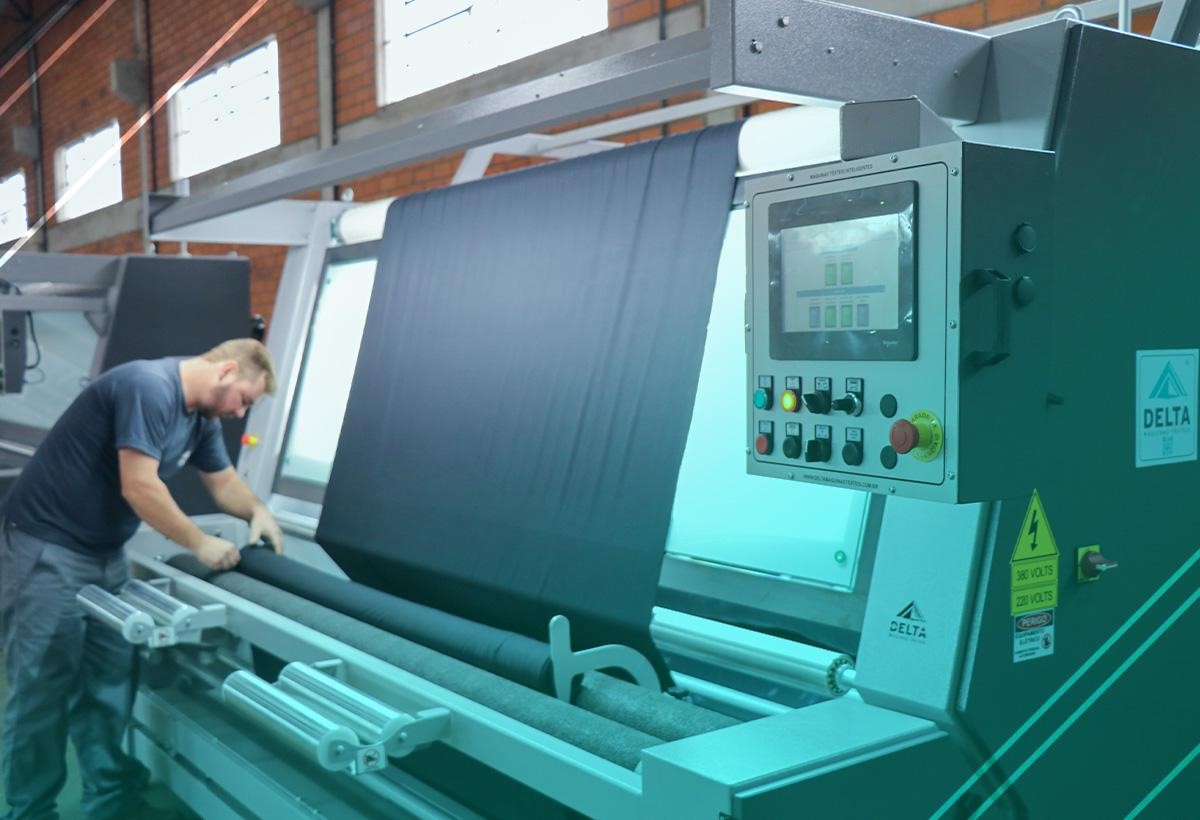Optimizing resources in the textile industry is essential to maintain the competitiveness of your business in the face of market changes. So, having high-quality technological equipment directly contributes to achieving this goal.
Thinking specifically about the manufacturing stage, in this article we have gathered the advantages of optimizing resources, in addition to Delta’s textile machines that can help you in this process.
Benefits of optimizing resources in manufacturing
Practicing resource optimization in the manufacturing stage ensures greater efficiency and quality of the final product. As it is one of the last steps, it is essential to avoid errors and rework to optimize time and cost and, thus, deliver the best result.
To reinforce, according to a study, the manufacturing stage of the textile industry is related to the moment when products begin to take shape, whether they are clothing, household items or industrial items. Therefore, the processes within this phase are generally:
- Design;
- Mold making;
- Railing;
- Fitting;
- Cutting;
- Sewing;
So, it is the role of the production manager to find more assertive solutions and ways to ensure the optimization of resources in all these processes, taking into account the amount of input needed.
The objective is to eliminate waste with unnecessary work and routines to speed up each stage and focus on creating a culture that aims for high performance.
Therefore, the benefits of optimization lie in the positive impact on productivity with the use of appropriate tools, equipment and machinery. Which, consequently, affects the industry’s revenue.
To apply this process you need:
- Carry out planning based on research into your business and the market;
- Standardize processes;
- Monitor the steps;
- Qualify the team;
- Carry out constant analyses;
- Use technology as an ally;
- Invest in efficient and quality equipment.
What are the resources that can be optimized?
When we talk about resource optimization we are stating the need to reduce, and even eliminate, losses in time, in the financial sector and in raw materials. Here, the main tip is to invest in equipment and machines that facilitate their optimization.
What needs to be clear is that optimization does not require grand solutions and, much less, benefits only one aspect of production. Optimization acts like a chain: when there is more agility in processes; there is less waste and rework, resulting in greater productivity and quality.
Therefore, a textile machine that reduces waste, or allows an expanded view of the conveyor belt, for example, is essential to achieve this objective. This means that investing in technological tools does not mean that it is only necessary to purchase software and hardware. It may be simpler than it seems!
Discover Delta’s solutions to optimize your industry’s resources

Our textile machines are solutions focused on the optimization and productivity of your industry. We develop equipment that facilitates your production processes in several stages. And in the manufacturing phase we have a portfolio with technological machines that aim to improve the quality of your products and procedures.
We are a company active in the sector and specialized in the development of efficient textile machines, equipment and processes. We offer modern solutions for the National and International Textile Industry.
An important difference for your industry is that all of our equipment is NR12 compliant.
Therefore, below, check out a list of our machines, their characteristics and benefits of investing in the manufacturing process with those who are pioneers and understand the subject:
RLX600 Mesh and Fabric Relaxer
The Relaxer is applied to use relaxation technology which, if aligned with standardization, generates greater connectivity and interactivity. This is a technique that develops the preparation of mesh and elastane fabrics for the spreading and cutting phase.
As a result, it completely eliminates the normal 24 and 48 hour rest period, optimizing production time. It also monitors and generates the necessary information for spreading, by relaxing the input from roll to roll, focusing on productivity and final quality.
It should be noted that this solution also promotes greater assertiveness in the fitting process, with an automated and standardized procedure, eliminating possible dimensional defects in cut parts. Finally, it also offers data integration with ERP.
The relaxer is a machine with a working speed of 30m/min and an installed power of 5KW.
Mesh Reviewer REV150
The Reviewer facilitates control over the receipt of raw materials, ensuring higher quality in the mesh and the final product. This is an important step, because it controls costs and aims to satisfy the end consumer.
This solution was developed to reduce interference caused by problems with raw materials, optimizing production and reducing waste.
It also has optional systems, such as cross-cutting, which can be manual or electric, the application of an identifying label for defects and different configurations: roll/roll; roll/plaited; and plaited/roll.
In short, the proofreader has a system that guarantees the quality of the roll and constant monitoring of width and footage. Furthermore, it has a synchronization and stretch control system, facilitating operation and increasing productivity gains.
This Delta machine has a working speed of 60m/min and an installed power of 3KW.
Flat Fabric Reviewer REV110

The fabric reviewer was developed to examine articles made from flat materials. Because the operation is simple, this is also a machine that facilitates the classification and identification of defects. As an optional feature, it can also have a digital ruler.
The benefits of the machine involve the inspection table with a different inclination, simplifying operation and productivity gains. Furthermore, it has perfect alignment of the edge of the roll and has meters included.
The REV110 has a working speed of 60m/min and an installed power of 2KW.
PAP500 Paper Punching Machine
This is a solution designed to perforate the paper used for spreading/cutting. It aims to reuse the paper that is discarded during the sublimation phase, avoiding waste.
The focus here is on sustainability and cost reduction. Another objective of this equipment is to guarantee productivity and quality in an efficient and excellent manner during perforation and paper winding.
The drill has a working speed of 10m/min and an installed power of 2KW.
Roller Elevator ELC100/500
The Elevator was designed to facilitate and optimize the feeding of the wrapping tables in the cutting sector area. This solution offers the possibility of filling the machine by the operator, in an ergonomic and standardized way. The aim is to ensure the physical integrity of the material.
Therefore, this equipment increases productivity, reducing labor and standardizing operations.
The ELC has a working speed of 80sec/roll and an installed power of 1.5KW.
 DWM555 Sample Washer
DWM555 Sample Washer
The Sample Washer is an intelligent piece of equipment and was developed with the aim of speeding up responses in laboratory tests, reducing the time from 3 hours to 20 minutes. With the washing and drying cycles, the machine indicates the percentage of mesh shrinkage. This simplifies monitoring, resulting in higher quality.
This equipment has a work cycle of 15 to 20 minutes, with an installed power of 5KW. Furthermore, this is a machine that optimizes the use of knits and fabrics and helps reduce waste.
Furthermore, the test sample is reduced, controlling material usage as well as labor. It improves the quality of the article and reduces rework rates.
Collar Counter FRC100
Finally, the Delta Counter was designed to efficiently and compactly count collars and straight lines. This action is done by reading image patterns, colors and intervals of the pieces.
Therefore, it offers a review table that allows a broad view of defects in items. The machine also provides an automatic stop sensor when there is a lack of fabric, to alert the need for supply.
The meter has a working speed of 50m/min and an installed power of 1KW.
We hope this content contributes to improving processes in your industry! And if you are curious about the features and benefits of Delta textile machines, get a free quote!



